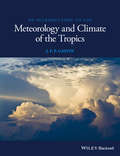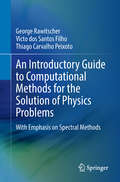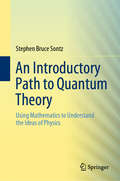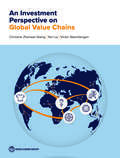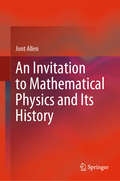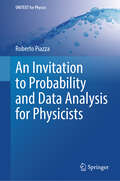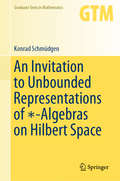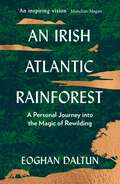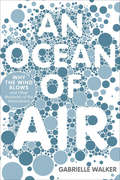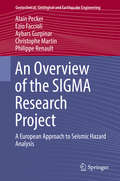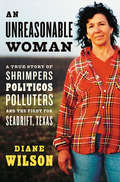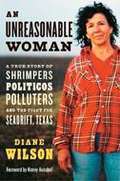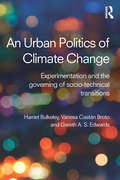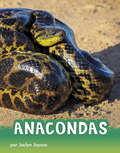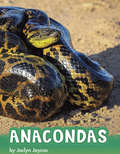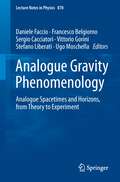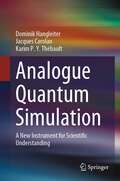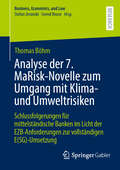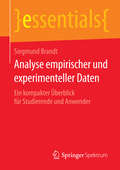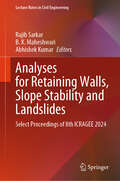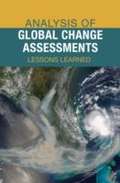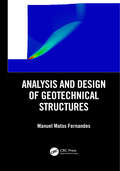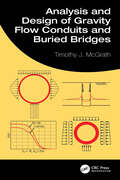- Table View
- List View
An Introduction to the Meteorology and Climate of the Tropics
by J. F. GalvinWhat do we mean by the tropics? The weather and the climates it produces across the tropical zone are significantly different from those experienced by the people living in higher latitudes, so forecasters across Europe and much of North America are unfamiliar with its effects. In this book, Jim Galvin demystifies the topic in this zone that is increasingly of interest to those studying weather and climate. This book was written for weather forecasters, meteorology, environmental science and geography students as an introductory guide. It builds on the experience of the author, his professional experience in the World Area Forecast Centre at the Met Office, Exeter, using studies into the weather and climate seen within the tropical air mass conducted over many years. Its unique approach presents a practical approach to tropical weather studies, drawing on both academic and practical knowledge, covering air mass dynamics, seasonal changes, moist and dry weather, climate variability and human health in chapters and appendices that build up the overall picture, summarising our current state of knowledge. As an overview, it covers the broad range of effects connected with climate and weather in a straightforward way and is clearly illustrated throughout.
An Introductory Guide to Computational Methods for the Solution of Physics Problems (Lecture Notes in Physics #955)
by George Rawitscher Victo dos Santos Filho Thiago Carvalho PeixotoThis monograph presents fundamental aspects of modern spectral and other computational methods, which are not generally taught in traditional courses. It emphasizes concepts as errors, convergence, stability, order and efficiency applied to the solution of physical problems. The spectral methods consist in expanding the function to be calculated into a set of appropriate basis functions (generally orthogonal polynomials) and the respective expansion coefficients are obtained via collocation equations. The main advantage of these methods is that they simultaneously take into account all available information, rather only the information available at a limited number of mesh points. They require more complicated matrix equations than those obtained in finite difference methods. However, the elegance, speed, and accuracy of the spectral methods more than compensates for any such drawbacks. During the course of the monograph, the authors examine the usually rapid convergence of the spectral expansions and the improved accuracy that results when nonequispaced support points are used, in contrast to the equispaced points used in finite difference methods. In particular, they demonstrate the enhanced accuracy obtained in the solution of integral equations.The monograph includes an informative introduction to old and new computational methods with numerous practical examples, while at the same time pointing out the errors that each of the available algorithms introduces into the specific solution. It is a valuable resource for undergraduate students as an introduction to the field and for graduate students wishing to compare the available computational methods. In addition, the work develops the criteria required for students to select the most suitable method to solve the particular scientific problem that they are confronting.
An Introductory Path to Quantum Theory: Using Mathematics to Understand the Ideas of Physics
by Stephen Bruce SontzSince the 17th century, physical theories have been expressed in the language of mathematical equations. This introduction to quantum theory uses that language to enable the reader to comprehend the notoriously non-intuitive ideas of quantum physics. The mathematical knowledge needed for using this book comes from standard undergraduate mathematics courses and is described in detail in the section Prerequisites. This text is especially aimed at advanced undergraduate and graduate students of mathematics, computer science, engineering and chemistry among other disciplines, provided they have the math background even though lacking preparation in physics. In fact, no previous formal study of physics is assumed.
An Investment Perspective on Global Value Chains
by Yan Liu Christine Zhenwei Qiang Victor SteenbergenThis report investigates the role of foreign direct investment (FDI) in helping developing countries participate in global value chains (GVCs). It combines the perspectives and strategies from three types of players: multinational corporations, domestic firms and governments. It aims to provide practical guidance for developing countries to develop strategies that use FDI to strengthen GVC participation and upgrading. The report has six main chapters: 1. FDI and GVCs. Assesses the trade-investment nexus and analyzes the effect of FDI in countries’ GVC participation and upgrading at the country level. 2. MNCs shape GVC development. Highlights MNCs' contribution to global economy and how their business strategies shape the evolution of GVCs. The chapter also compares MNCs' business strategies in terms of outsourcing and offshoring, risk mitigation and increasing market power across GVC archetypes. 3. Domestic firm perspectives on GVC participation. Looks at the various paths domestic firms can take to internationalize their production and trade. Investigates domestic firm characteristics that predict higher GVC participation, and the effect of GVC participation on firm performance. 4. Investment policy and promotion: what is in a government’s toolbox? Summarizes the various policy instruments governments have at their disposal to help attract MNCs to their country and facilitate GVC participation of domestic firms. 5. Integrating countries into GVCs. Draws on a range of case studies to illustrate how governments can develop coherent strategies and policy packages to integrate their countries into GVCs. 6. FDI and GVCs in the wake of COVID-19. Reflects the impact of COVID-19 on FDI and GVCs, the response from multinationals and suppliers, and the implications for GVC reconfiguration. In addition, there are seven case studies that offer more nuanced analysis on the GVC participation in selected countries and sectors: • Five qualitative case studies: Five countries have been selected that managed to use FDI to stimulate GVC participation using a range of approaches. By design, these five countries also cover five different GVC archetypes. These countries are: (1) Kenya (horticulture); (2) Dominican Republic (textiles); (3) Mauritius (tourism); (4) Malaysia (electronics); (5) China (software). • Two quantitative case studies: Rwanda, West-Bengal (India). These use a combination of firm- and transaction level datasets to study firm-level dynamics that explain the role of multinational and domestic firms across GVCs.
An Invitation to Mathematical Physics and Its History
by Jont AllenThis state of the art book takes an applications based approach to teaching mathematics to engineering and applied sciences students. The book lays emphasis on associating mathematical concepts with their physical counterparts, training students of engineering in mathematics to help them learn how things work. The book covers the concepts of number systems, algebra equations and calculus through discussions on mathematics and physics, discussing their intertwined history in a chronological order. The book includes examples, homework problems, and exercises. This book can be used to teach a first course in engineering mathematics or as a refresher on basic mathematical physics. Besides serving as core textbook, this book will also appeal to undergraduate students with cross-disciplinary interests as a supplementary text or reader.
An Invitation to Probability and Data Analysis for Physicists (UNITEXT for Physics)
by Roberto PiazzaThis book is an introduction to probability, statistics, data analysis, and hypothesis testing in physics. It is designed to be taught at different levels, from basic to advanced, and to be enjoyed by anyone doing research in the physical sciences or related subjects. It aims to be a companion in a journey leading the reader to appreciate and enjoy the major role of these subjects in all aspects of the physical sciences. With specific examples, the book encourages readers to meditate on the distinctive meaning of probability in classical and quantum physics. The author draws on his teaching experience in statistical physics and data analysis, as well as his research work in fields like complex systems and soft matter, to provide a comprehensive introduction to statistical methods.
An Invitation to Unbounded Representations of ∗-Algebras on Hilbert Space (Graduate Texts in Mathematics #285)
by Konrad SchmüdgenThis textbook provides an introduction to representations of general ∗-algebras by unbounded operators on Hilbert space, a topic that naturally arises in quantum mechanics but has so far only been properly treated in advanced monographs aimed at researchers. The book covers both the general theory of unbounded representation theory on Hilbert space as well as representations of important special classes of ∗-algebra, such as the Weyl algebra and enveloping algebras associated to unitary representations of Lie groups. A broad scope of topics are treated in book form for the first time, including group graded ∗-algebras, the transition probability of states, Archimedean quadratic modules, noncommutative Positivstellensätze, induced representations, well-behaved representations and representations on rigged modules.Making advanced material accessible to graduate students, this book will appeal to students and researchers interested in advanced functional analysis and mathematical physics, and with many exercises it can be used for courses on the representation theory of Lie groups and its application to quantum physics. A rich selection of material and bibliographic notes also make it a valuable reference.
An Irish Atlantic Rainforest: A Personal Journey into the Magic of Rewilding
by Eoghan DaltunAn Post Irish Book Award Winner'An inspiring vision' Manchán Magan'The stories are absorbing, the writing charismatic and the ideas thought-provoking' Irish IndependentOn the Beara peninsula in West Cork, a temperate rainforest flourishes. It is the life work of Eoghan Daltun, who had a vision to rewild a 73-acre farm he bought, moving there from Dublin with his family in 2009. An Irish Atlantic Rainforest charts that remarkable journey. Part memoir, part environmental treatise, as a wild forest bursts into life before our eyes, we're invited to consider the burning issues of our time: climate breakdown, ecological collapse, and why our very survival as a species requires that we urgently and radically transform our relationship with nature. Powerfully descriptive, lovingly told, An Irish Atlantic Rainforest presents an enduring picture of the regenerative force of nature, and how one Irishman let it happen.
An Irish Atlantic Rainforest: A Personal Journey into the Magic of Rewilding
by Eoghan DaltunAn Post Irish Book Award Winner'An inspiring vision' Manchán Magan'The stories are absorbing, the writing charismatic and the ideas thought-provoking' Irish IndependentOn the Beara peninsula in West Cork, a temperate rainforest flourishes. It is the life work of Eoghan Daltun, who had a vision to rewild a 73-acre farm he bought, moving there from Dublin with his family in 2009. An Irish Atlantic Rainforest charts that remarkable journey. Part memoir, part environmental treatise, as a wild forest bursts into life before our eyes, we're invited to consider the burning issues of our time: climate breakdown, ecological collapse, and why our very survival as a species requires that we urgently and radically transform our relationship with nature. Powerfully descriptive, lovingly told, An Irish Atlantic Rainforest presents an enduring picture of the regenerative force of nature, and how one Irishman let it happen.
An Ocean of Air: Why the Wind Blows and Other Mysteries of the Atmosphere (Read-On)
by Gabrielle WalkerThe science and history of what lies between us and space: “I never knew air could be so interesting.” —Bill Bryson, New York Times bestselling author of The Body: A Guide for OccupantsA flamboyant Renaissance Italian discovers how heavy our air really is (the air filling Carnegie Hall, for example, weighs seventy thousand pounds). A one-eyed barnstorming pilot finds a set of winds that constantly blow five miles above our heads. An impoverished American farmer figures out why hurricanes move in a circle by carving equations with his pitchfork on a barn door. A well-meaning inventor nearly destroys the ozone layer (he also came up with the idea of putting lead in gasoline). A reclusive mathematical genius predicts, thirty years before he’s proven right, that the sky contains a layer of floating metal fed by the glowing tails of shooting stars.We don’t just live in the air; we live because of it. It’s the most miraculous substance on earth, responsible for our food, our weather, our water, and our ability to hear. In this exuberant book, science writer Gabrielle Walker peels back the layers of our atmosphere with the stories of the people who have uncovered its secrets.“A sense of wonder . . . animates Ms. Walker’s high-spirited narrative and speeds it along like a fresh-blowing westerly.” —The New York Times“A fabulous introduction to the world above our heads.” —Daily Mail on Sunday“A lively history of scientists’ and adventurers’ exploration of this important and complex contributor to life on Earth . . . readers will find this informative book to be a breath of fresh air.” —Publishers Weekly
An Overview of the SIGMA Research Project: A European Approach to Seismic Hazard Analysis (Geotechnical, Geological and Earthquake Engineering #42)
by Alain Pecker Ezio Faccioli Aybars Gurpinar Christophe Martin Philippe RenaultThis book presents a summary of the important outcomes of the SIGMA project related to all aspects of Probabilistic Seismic Hazard Assessment: source characterization, rock motion characterization, site response characterization, and hazard calculations, with for all of them emphasis on the treatment of uncertainties. In recent years, attempts have been made to identify and quantify uncertainties in seismic hazard estimations for regions with moderate seismicity. These uncertainties, for which no estimation standards exist, create major difficulties and can lead to different interpretations and divergent opinions among experts. To address this matter, an international research project was launched in January 2011, by an industrial consortium composed of French and Italian organizations. This program, named SIGMA (Seismic Ground Motion Assessment) lasted for five years and involved a large number of international institutions. This book is intended for instructors running courses on engineering seismology, graduate students in the same field and practicing engineers involved in Probabilistic Seismic Hazard Analyses.
An Unreasonable Woman
by Diane WilsonWhen Diane Wilson, fourth-generation shrimp-boat captain and mother of five, learns that she lives in the most polluted county in the United States, she decides to fight back. She launches a campaign against a multibillion-dollar corporation that has been covering up spills, silencing workers, flouting the EPA, and dumping lethal ethylene dichloride and vinyl chloride into the bays along her beloved Texas Gulf Coast. In an epic tale of bravery, Wilson takes her fight to the courts, to the gates of the chemical plant, and to the halls of power in Austin. Along the way she meets with scorn, bribery, character assassination, and death threats. Finally Wilson realizes that she must break the law to win justice: She resorts to nonviolent disobedience, direct action, and hunger strikes. Wilson's vivid South Texas dialogue resides somewhere between Alice Walker and William Faulkner, and her dazzling prose brings to mind the magic realism of Gabriel Garcia Marquez, replete with dreams and prophecies.
An Unreasonable Woman: A True Story of Shrimpers, Políticos, Polluters, and the Fight for Seadrift, Texas
by Diane WilsonFor her activism on behalf of Texas Gulf Coast bays, Wilson has been recognized with awards including Mother Jones' Hellraiser of the Month. In her first book, this fourth-generation shrimper relates her battles against a plastics company (and their political allies) whose dumping of toxic chemicals resulted in her county's designation as the nation's most polluted in the late 1980s. Annotation ©2005 Book News, Inc., Portland, OR (booknews.com)
An Unruly World?: Globalization, Governance and Geography
by Susan M. Roberts Andrew Herod Gearóid Ó TuathailAn Unruly World explores the diverse conundrums thrown up by seemingly unruly globalization. Examining how fast transnational capitalism is re-making the rules of the game, in a wide variety of different places, domains, and sectors, the authors focus on a wide range of issues: from analysis of 'soft capitalism', and the post-Cold War organizational drives of international trade unions, to the clamour of states to reinvent welfare policy, and the efforts of citizen groups to challenge trade and financial regimes. An Unruly World argues that we are not living in a world bereft of rules and rulers; the rules governing the global economy today are more strictly enforced by international organizations and rhetoric than ever before.
An Urban Politics of Climate Change: Experimentation and the Governing of Socio-Technical Transitions
by Vanesa Castán Broto Harriet A Bulkeley Gareth A.S. EdwardsThe confluence of global climate change, growing levels of energy consumption and rapid urbanization has led the international policy community to regard urban responses to climate change as ‘an urgent agenda’ (World Bank 2010). The contribution of cities to rising levels of greenhouse gas emissions coupled with concerns about the vulnerability of urban places and communities to the impacts of climate change have led to a relatively recent and rapidly proliferating interest amongst both academic and policy communities in how cities might be able to respond to mitigation and adaptation. Attention has focused on the potential for municipal authorities to develop policy and plans that can address these twin issues, and the challenges of capacity, resource and politics that have been encountered. While this literature has captured some of the essential means through which the urban response to climate change is being forged, is that it has failed to take account of the multiple sites and spaces of climate change response that are emerging in cities ‘off-plan’. An Urban Politics of Climate Change provides the first account of urban responses to climate change that moves beyond the boundary of municipal institutions to critically examine the governing of climate change in the city as a matter of both public and private authority, and to engage with the ways in which this is bound up with the politics and practices of urban infrastructure. The book draws on cases from multiple cities in both developed and emerging economies to providing new insight into the potential and limitations of urban responses to climate change, as well as new conceptual direction for our understanding of the politics of environmental governance.
Anacondas (Animals en espanol)
by Jaclyn Jaycox¡Las anacondas son las serpientes ma´s grandes del mundo! Estas enormes criaturas estrujan a sus presas hasta asfixiarlas. Algunas son tan largas como un autobu´s y son capaces de estar bajo el agua por mucho tiempo mientras cazan. Desli´zate por las pa´ginas y aprende sobre estas poderosas serpientes.
Anacondas (Animals)
by Jaclyn JaycoxAnacondas are the heaviest snakes in the world! These big snakes use their bodies to squeeze their prey. Anacondas can be as long as a bus and can stay underwater for a long time while hunting. Slither towards the facts on these powerful snakes. <P><P><i>Advisory: Bookshare has learned that this book offers only partial accessibility. We have kept it in the collection because it is useful for some of our members. Benetech is actively working on projects to improve accessibility issues such as these.</i>
Analogue Gravity Phenomenology: Analogue Spacetimes and Horizons, from Theory to Experiment (Lecture Notes in Physics #870)
by Ugo Moschella Vittorio Gorini Sergio Cacciatori Francesco Belgiorno Stefano Liberati Daniele FaccioAnalogue Gravity Phenomenology is a collection of contributions that cover a vast range of areas in physics, ranging from surface wave propagation in fluids to nonlinear optics. The underlying common aspect of all these topics, and hence the main focus and perspective from which they are explained here, is the attempt to develop analogue models for gravitational systems. The original and main motivation of the field is the verification and study of Hawking radiation from a horizon: the enabling feature is the possibility to generate horizons in the laboratory with a wide range of physical systems that involve a flow of one kind or another. The years around 2010 and onwards witnessed a sudden surge of experimental activity in this expanding field of research. However, building an expertise in analogue gravity requires the researcher to be equipped with a rather broad range of knowledge and interests. The aim of this book is to bring the reader up to date with the latest developments and provide the basic background required in order to appreciate the goals, difficulties, and success stories in the field of analogue gravity. Each chapter of the book treats a different topic explained in detail by the major experts for each specific discipline. The first chapters give an overview of black hole spacetimes and Hawking radiation before moving on to describe the large variety of analogue spacetimes that have been proposed and are currently under investigation. This introductory part is then followed by an in-depth description of what are currently the three most promising analogue spacetime settings, namely surface waves in flowing fluids, acoustic oscillations in Bose-Einstein condensates and electromagnetic waves in nonlinear optics. Both theory and experimental endeavours are explained in detail. The final chapters refer to other aspects of analogue gravity beyond the study of Hawking radiation, such as Lorentz invariance violations and Brownian motion in curved spacetimes, before concluding with a return to the origins of the field and a description of the available observational evidence for horizons in astrophysical black holes.
Analogue Quantum Simulation: A New Instrument for Scientific Understanding
by Dominik Hangleiter Jacques Carolan Karim P. ThébaultThis book presents fresh insights into analogue quantum simulation. It argues that these simulations are a new instrument of science. They require a bespoke philosophical analysis, sensitive to both the similarities to and the differences with conventional scientific practices such as analogical argument, experimentation, and classical simulation.The analysis situates the various forms of analogue quantum simulation on the methodological map of modern science. In doing so, it clarifies the functions that analogue quantum simulation serves in scientific practice. To this end, the authors introduce a number of important terminological distinctions. They establish that analogue quantum ‘computation' and ‘emulation' are distinct scientific practices and lead to distinct forms of scientific understanding. The authors also demonstrate the normative value of the computation vs. emulation distinction at both an epistemic and a pragmatic level.The volume features a range of detailed case studies focusing on: i) cold atom computation of many-body localisation and the Higgs mode; ii) photonic emulation of quantum effects in biological systems; and iii) emulation of Hawing radiation in dispersive optical media. Overall, readers will discover a normative framework to isolate and support the goals of scientists undertaking analogue quantum simulation and emulation. This framework will prove useful to both working scientists and philosophers of science interested in cutting-edge scientific practice.
Analyse der 7. MaRisk-Novelle zum Umgang mit Klima- und Umweltrisiken: Schlussfolgerungen für mittelständische Banken im Licht der EZB-Anforderungen zur vollständigen E(SG)-Umsetzung (Business, Economics, and Law)
by Thomas BöhmDie Europäische Zentralbank stellte in ihrer Mitteilung vom 02. November 2022 klar, dass alle Banken die regulatorischen Anforderungen zum Umgang mit Klima- und Umweltrisiken bis spätestens Ende 2024 vollständig erfüllen müssen. Mit der 7. Novelle hat die Bundesanstalt für Finanzdienstleistungsaufsicht (BaFin) ESG-Risiken in ihre Mindestanforderungen an das Risikomanagement (MaRisk) der Banken übernommen. In diesem Werk werden die aufsichtlichen ESG-Erwartungshaltungen von EZB, EBA und BaFin dargelegt und miteinander verglichen. Die Arbeit zeigt Ansätze auf, wie mittelständische Institute angemessen mit Klima- und Umweltrisiken in der Banksteuerung umgehen können. Dabei wird deutlich, dass in einer konsequenten institutsspezifischen Umsetzung, neben der Reduzierung möglicher Risiken, auch viele Chancen in Form neuer Geschäftsfelder, gesteigerter Ertragschancen und Imagegewinn liegen.
Analyse empirischer und experimenteller Daten: Ein kompakter Überblick für Studierende und Anwender (essentials)
by Siegmund BrandtDiese kompakte Einführung enthält die wichtigsten Grundlagen der mathematischen Statistik, die Beschreibung von Messungen und deren Fehler als Ergebnisse von Stichproben und die Methode der kleinsten Quadrate, angewandt auf verschieden schwierige konkrete Beispiele. Zusätzlich werden kurze Hinweise auf weitere Verfahren der Datenanalyse gegeben.
Analyses for Retaining walls, Slope Stability and Landslides: Select Proceedings of 8th ICRAGEE 2024 (Lecture Notes in Civil Engineering #568)
by Abhishek Kumar Rajib Sarkar B. K. MaheshwariThis book will present the select proceedings of the 8th International Conference on Recent Advances in Geotechnical Earthquake Engineering and Soil Dynamics (8ICRAGEE) held at the Indian Institute of Technology (IIT), Guwahati between December 11 and 14, 2024. It contains the latest research papers covering the contributions and accomplishments in geotechnical earthquake engineering and soil dynamics in the last four years. The five volumes of the book cover a wide range of topics, including but not limited to seismic hazard analysis, wave propagation and site characterization, dynamic properties and liquefaction of soils, pile foundations, offshore foundations, seismic design of retaining structures and dams, seismic slope stability and landslides, dynamic soil-structure interaction, seismic design of structures. Further, recent developments on these topics are covered in different chapters. This book will be valuable not only for researchers and professionals but also for drawing an agenda for future courses of action from the perspective of geotechnical earthquake engineering, keeping the national need at the forefront.
Analysis Of Global Change Assessments Lessons Learned
by National Research Council of the National AcademiesGlobal change assessments inform decision makers about the scientific underpinnings of a range of environmental issues, such as climate change, stratospheric ozone depletion, and loss of biodiversity. Dozens of assessments have been conducted to date by various U.S. and international groups, many of them influencing public policies, technology development, and research directions. This report analyzes strengths and weaknesses of eight past assessments to inform future efforts. Common elements of effective assessments include strong leadership, extensive engagement with interested and affected parties, a transparent science-policy interface, and well defined communication strategies. The report identifies 11 essential elements of effective assessments and recommends that future assessments include decision support tools that make use of information at the regional and local level where decisions are made.
Analysis and Design of Geotechnical Structures
by Manuel Matos FernandesAnalysis and design of geotechnical structures combines, in a single endeavor, a textbook to assist students in understanding the behavior of the main geotechnical works and a guide for practising geotechnical engineers, designers, and consultants. The subjects are treated in line with limit state design, which underpins the Eurocodes and most North America design codes. Instructors and students will value innovative approaches to numerous issues refined by the experience of the author in teaching generations of enthusiastic students. Professionals will gain from its comprehensive treatment of the topics covered in each chapter, supplemented by a plethora of informative material used by consultants and designers. For the benefit of both academics and professionals, conceptual exercises and practical geotechnical design problems are proposed at the end of most chapters. A final annex includes detailed resolutions of the exercises and problems.
Analysis and Design of Gravity Flow Conduits and Buried Bridges
by Timothy J. McGrathThis book covers the structural analysis and design of buried gravity flow conduits, including traditional pipes, arches, box conduits, and buried bridges with spans up to 80 ft (25 m) and greater. The text primarily covers concrete, corrugated metal, and plastic conduits but is generally applicable to other materials. Applications include culverts, storm drains, sewers, and pedestrian and vehicular crossings.The book is intended to introduce the subject to practitioners new to the field, as well as provide detailed information for those with prior experience. The opening chapter presents historical background and basic design models to introduce important concepts and then follows with chapters devoted to materials, soils, soil-conduit interaction, and guidance on the use of finite elements for analysis. Then design methods for evaluating soil-conduit systems are presented, along with guidance on important considerations during installation. The book concludes with field experiences of when things went wrong and why.Analysis and Design of Gravity Flow Conduits and Buried Bridges offers a unified and comprehensive guide for practicing engineers working on buried pipe design, private consultants, and product manufacturers, as well as researchers in the area.
